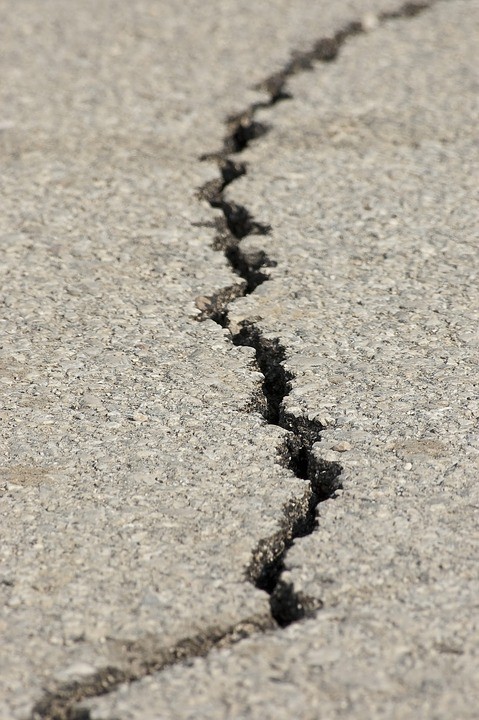Unusual seismic signals rumbling across the Azores Islands in the North Atlantic Ocean might indicate the start of a new volcanic eruption. The island of Sao Jorge, one of the Azores' nine islands, has been impacted by more than 1,100 earthquakes.
With the possibility of a volcanic explosion, Velas Mayor Luis Silveira, who oversees most of Sao Jorge's population, launched an emergency plan.

Recent Activities
On Sunday, the regional Civil Protection organization said it had contacted mayors and fire departments around the island to urge them to "stay watchful" and assist the inhabitants of Sao Jorge in the event of a volcanic eruption.
Scientists are drawing parallels between this swarm of earthquakes and a sudden swarm of earthquakes that occurred last year on Spain's La Palma island, which is located roughly 870 miles southeast of the Azores; that swarm was followed by a destructive volcanic eruption that lasted much of last year, covering a large area with lava and/or volcanic ash and cinders.
While there are worries that a deadly volcano would erupt soon, there are also fears that an Atlantic-wide tsunami could occur; however, the USGS and other publications quickly point out that this is unlikely to happen.
Sao Jorge Island
Sao Jorge Island, located in the Azores, is barely 33 miles long and less than 4 miles broad, with an estimated population of 8,100 people. Volcanic fissure eruptions began in the eastern half of the island and built the island. The island's western two-thirds are younger, produced by fissure-fed lava flows. In 1580, lava erupted from three places above the south-central coast, resulting in flows that reached the sea.
The eruption of 1580 took the lives of ten people. Following the 1580 eruption, five more big eruptions occurred, culminating in a historic explosion on May 1, 1808. Suffocating fumes and carboxylic acid were discharged from a vent along the Manadas ridge that day, and thick greenish vaporous clouds of chloric and sulfuric acids were reported to spread quickly throughout the island's flora, destroying everything.
Multiple severe earthquakes were recorded every hour throughout that eruption episode, causing considerable terror among inhabitants on the island. Many homes, structures, and cultivable fields were destroyed due to the earthquakes and subsequent volcanic activity. The mortality toll from the 1808 eruption was quite modest, with only eight deaths being documented.
Submarine volcanic vents occurred near off the island's coast in the early 1900s, but no lava has poured across the island since the 1808 volcanic eruption.
CIVISA, the civil defense organization in charge of monitoring seismic activity in the area, said it plans to deploy more equipment to detect signals of volcanic activity. This swarm is likely caused by magma movement beneath the surface, indicating that a volcanic eruption might occur in the following days or weeks.
Earthquake Swarm
An earthquake swarm occurred on La Palma Island in the Canary Islands in September 2021, and an eruption followed two days afterward. That large-scale eruption sparked fears that volcanic activity may lead to a disaster in the United States coast.
Some speculated that a big landslide caused by a volcanic eruption might result in a colossal mega wave sweeping over the Atlantic.
Mega Tsunami
A "mega tsunami" is a massive wave caused by a significant, unexpected material displacement into a body of water. An ordinary tsunami from a major earthquake might be as high as 100 feet tall, but a mega-tsunami could be hundreds of feet tall or even thousands of feet tall.
While typical tsunamis are caused by underwater earthquakes that cause a seafloor rise or fall, displacing water, a mega-tsunami occurs when a massive amount of material suddenly falls into the water; this could be caused by a large meteor impact or a large meteor major landslide, particularly on volcanic islands.
Because a mega-tsunami is so large, it might reach dozens of miles inland or beyond in minutes. In 2000, a BBC docudrama series called "End Day" popularized the concept of a Canary Island mega-tsunami, depicting water pouring as far as the United States.
The storm wreaked havoc on the East Coast, destroying practically everything in its path, even well inland. The Next Mega Tsunami: Killer Waves, a NatGeo TV documentary, discussed the potential of large seismic occurrences causing huge waves over the oceans.
Comparing to Previous Studies
In a research report published in 2001, Steven N. Ward and Simon Day argued that a shift in the volcano's eruptive activity now erupting and a crack on the volcano that originated during an eruption in 1949 might be the precursors of a huge collapse.
They calculated that a collapse of this magnitude would generate tsunamis over the North Atlantic Ocean, wreaking havoc on the United States and Canada.
However, a recent study has questioned whether the tsunami would still be large far from La Palma. The tsunami wave's height would swiftly decay away from the source, and interactions with the continental shelf further limit its magnitude.
According to some data, most Canary Island collapses were multistage occurrences that were less successful at causing tsunamis. A multistage collapse in La Palma would also result in weaker tsunamis. The USGS released papers in October emphasizing how unlikely a mega-tsunami from volcanic activity in the Canary Islands is, and the same is likely to be true for an eruption on the Azores.
For now, experts will continue to watch the seismic activity in the Azores for any signals of an impending volcanic eruption. The island's 214-year stretch of no volcanic activity might be ending.
Ahora mismo en la Palma pic.twitter.com/ecCZaDLuaY
— Mary Arellano Moreno (@mary_aam) September 19, 2021
Related Article : Aseismic Creep Surfaces Shaking Discovery in California's Fault
For similar news, don't forget to follow Nature World News!
© 2025 NatureWorldNews.com All rights reserved. Do not reproduce without permission.





